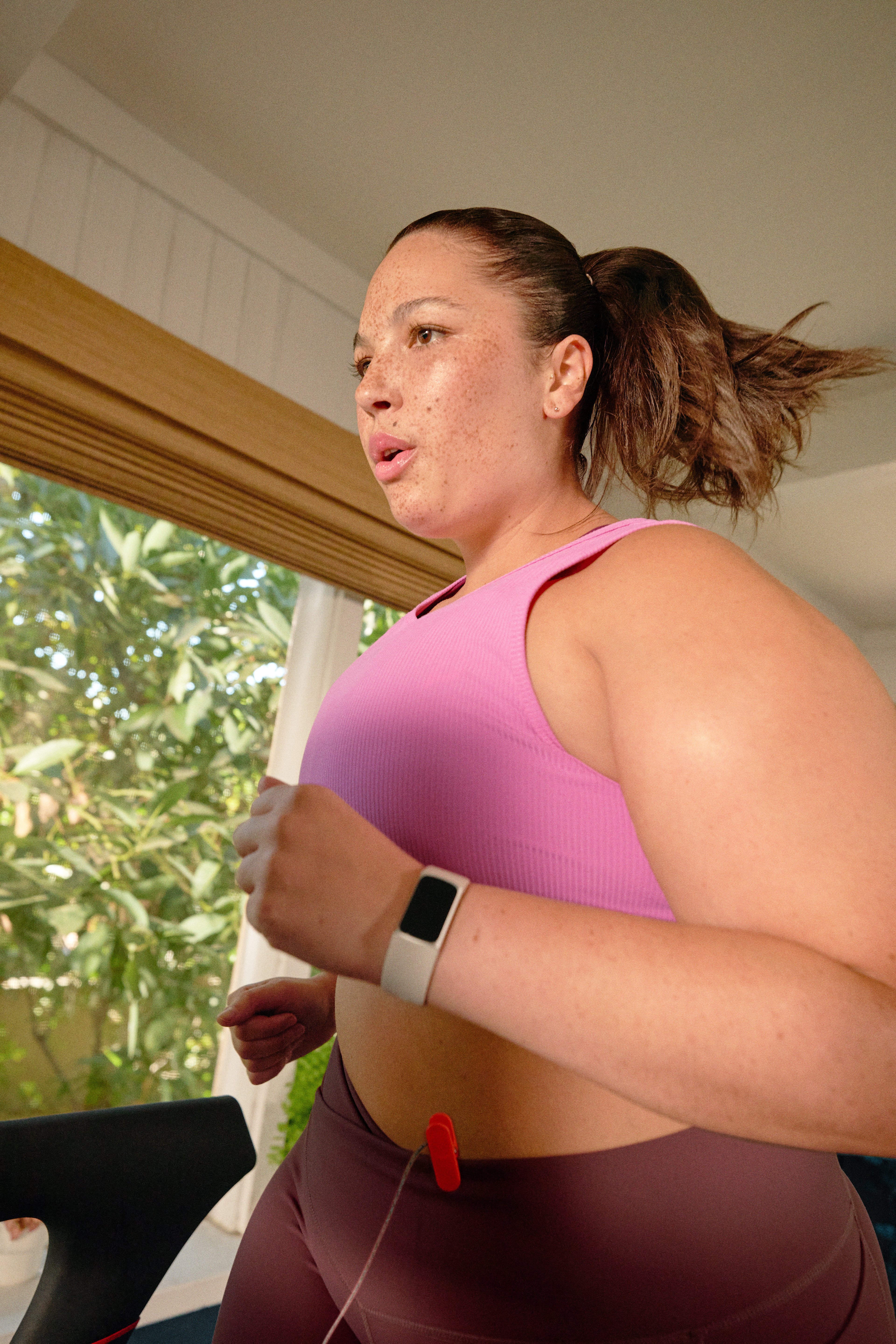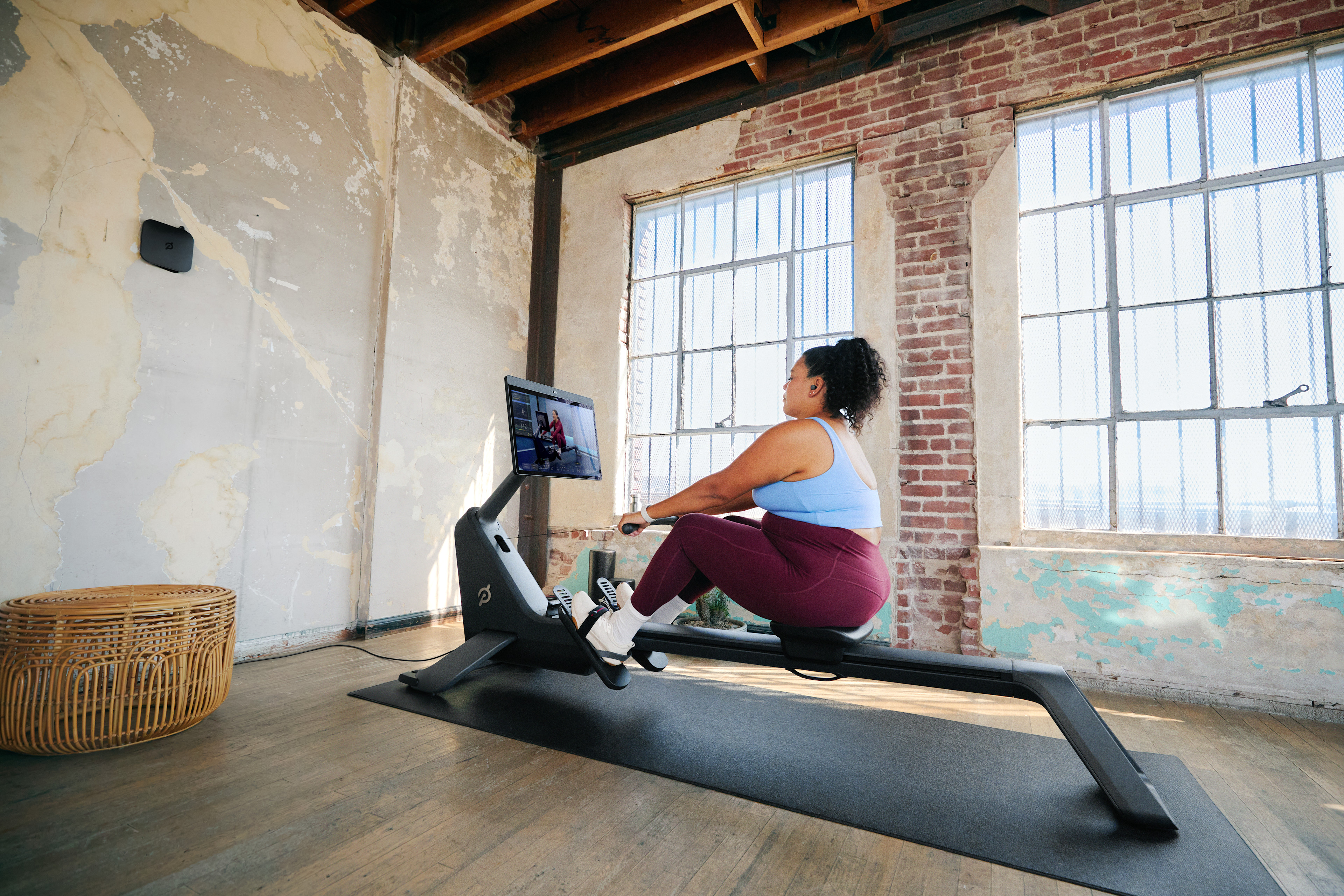
3 Simple VO2 Max Workouts You Can Do with Any Kind of Cardio
On the hunt for a workout to improve your VO2 max? Look no further.
By Pam Moore•
What Is VO2 Max?
What Types of Workouts Improve Your VO2 Max?
Tips for Working Out to Improve Your VO2 Max
VO2 Max Workouts for Every Fitness Modality
Takeaway
In the past, elite athletes may have been the only ones worried about fitting a VO2 max workout into their schedule, but that’s no longer the case. VO2 max is a metric known for being closely linked to athletic performance, but it also provides valuable insight into your overall wellbeing. As a result, “VO2 max has become an increasingly popular topic for people interested in their long-term health,” says Peloton instructor Dr. Charlotte Weidenbach.
There are arguably more people than ever training with their VO2 max in mind. The thing is, there isn’t just one perfect VO2 max workout, and there is such a thing as too much of this type of training. Here’s everything you need to know about working out to improve your VO2 max, including different VO2 max workouts to try depending on your modality of choice.
What Is VO2 Max?
VO2 max refers to the maximal level of oxygen your body can use during exercise, and it happens to be one of the best indicators of cardiovascular fitness and aerobic endurance, Dr. Charlotte says. It’s a measure of how many milliliters of oxygen you can utilize per kilogram of body weight per minute—the higher the number, the better.
Your VO2 max is determined by both unchangeable factors, like gender and genetics, and changeable ones, like your fitness level. You can modify your training to improve your VO2 max—which, in turn, has many benefits for your workout performance, health, and longevity.
When your VO2 max increases, so does your ability to handle hard work. The higher your VO2 max, the more blood your heart can pump to your muscles, either by increasing the stroke rate (beats per minute), volume of blood circulated per stroke, or both, says exercise physiologist and certified performance and sports scientist Mollie Brewer. More circulating blood means more oxygen reaches your muscles, which fuels them for longer before fatigue can set in and slow you down, Brewer explains.
“For athletes, that means an increase in performance, overall stamina, and recovery,” Dr. Charlotte explains. “It’s not only the base for better performance in training, though—a higher VO2 max is also known to lower all-cause mortality, and more specifically, it lowers the risk of developing heart and metabolic diseases.” According to a 2018 research review in Frontiers in Bioscience, VO2 max is associated with a longer lifespan and decreased risk of certain diagnoses, including cancer, chronic obstructive pulmonary disease (COPD), and heart failure.
There are a few ways to measure your VO2 max. For the most accurate results, your best bet is lab testing, where you run on a treadmill or pedal on a stationary bike at gradually increasing intensities according to a specific protocol. All the while, you’re breathing into a metabolic mask that allows the testing facility to gather the necessary metrics to determine your VO2 max. For those who don’t have the budget or the interest in formal testing, you can do a field test yourself using methods like the Astrand treadmill test or the Cooper 1.5-mile walk-run test. While many fitness tracker watches can calculate your VO2 max, research shows they’re not the most accurate.

Peloton App
Access thousands of classes with no equipment needed.
What Types of Workouts Improve Your VO2 Max?
Great news: All aerobic (aka cardio) exercise can improve your VO2 max to some degree, especially if you’re new to training. Research confirms that a wide range of exercise intensities can lead to improvements. “Generally, the body’s oxygen consumption is determined by many systems working together, which is why various types of training will increase VO2max,” Dr. Charlotte explains.
Let’s say you’re already training regularly and want to take a more targeted approach. While there is no one definitive best workout for improving VO2 max, two categories of cardio appear to offer the most generous VO2 max–boosting effects: high-intensity interval training (HIIT) and lower-intensity endurance efforts.
HIIT
Let’s start with HIIT. This type of workout is most commonly associated with VO2 max training, and research has shown that it is highly effective in improving VO2 max. One small 2010 study published in the Journal of Strength and Conditioning Research, for example, found that just six cycling HIIT workouts over the course of two weeks significantly improved VO2 max in a group of active young men and women.
If you’re unfamiliar, HIIT involves alternating intervals of exercise at a high or maximal intensity (think: 85 to 100 percent of your maximum heart rate, or training zones 4 or 5) with periods of rest. These spicy intervals typically include a work-to-recovery ratio of anywhere from 1:1 to 1:5, Brewer says. The work intervals typically range from 30 seconds to 5 minutes, with the entire workout lasting 20 to 40 minutes, Dr. Charlotte adds. “High intensity is what challenges your VO2 max. In intervals, you should reach at least 85 percent of your maximum output.”
And in addition to improving your VO2 max, HIIT has the bonus of being super time-efficient. When your schedule doesn’t allow a longer workout, these workouts offer a lot of bang for your buck. That said, the high intensity means you need to approach them carefully to avoid injury and burnout, Brewer says. Namely, you should make sure you warm up, Dr. Charlotte says—it’s one of the biggest mistakes people make with this style of training.
Endurance Efforts
Alternatively, longer, low-intensity workouts can also build your VO2 max. A 2022 Translational Sports Medicine meta-analysis comparing low-intensity exercise to high-intensity interval training found that both were associated with VO2 max improvements, and when it came to effectiveness, there was no obvious winner.
Maintaining an endurance pace or Zone 2 effort (about 60 to 70 percent of your maximum heart rate) for 90 minutes to four hours in duration is another excellent way to improve your VO2 max, Brewer says. This type of low-intensity steady-state training contributes to improved oxygen metabolism by increasing mitochondrial density in muscle cells, thereby increasing your VO2 max, Dr. Charlotte explains.
Related Articles

Cardio
Everyone Needs to Do Cardio. Here’s How to Love Having It In Your Routine

Health
Psst, Did You Know You Can Lower Your Resting Heart Rate with Exercise?

Health
How Much Exercise Do You Need to Improve Longevity? (Hint: It's Not As Much As You Think)

Cardio
Want to Plan Your Workouts More Effectively? Zone Training Can Help
Tips for Working Out to Improve Your VO2 Max
Now you know which workouts will help boost your VO2 max—here are some important dos and don’ts to help you get the most out of them and properly incorporate them into your routine.
First, Build a Base
For optimal fitness gains and durability, it’s essential to have a solid fitness foundation before incorporating hard intervals into your training. That means focusing on low-intensity, steady-state training (sometimes called LISS cardio), where the pace is conversational, Dr. Charlotte says. “This form of exercise should actually be the main focus for all endurance-focused athletes,” she adds. As she explains above, this type of training works to improve your VO2 max by increasing the density of mitochondria (energy-producing organelles) in muscle cells.
Go Hard Enough
If you want to experiment with the lung-busting intervals generally associated with using HIIT for VO2 max training, know that the magic happens when your work periods are short enough that you can go incredibly hard—we’re talking gasping for breath—until it’s time for your recovery. “Many people make the mistake of not going high enough in intensity, but then also don’t really recover in resting periods,” Dr. Charlotte says.
While there’s debate about the optimum duration of VO2 max-focused intervals, Brewer says four minutes is an excellent middle ground; long enough to train your body and mind to keep going when your muscles are burning, but short enough to minimize your risk of overtraining.
Prioritize Quality Over Quantity
When using interval training to improve your VO2 max, less is more. “The key to VO2 max training is quality over quantity,” Dr. Charlotte says. “A proper HIIT session needs to be really tough, and you shouldn’t feel like doing another one the next day. High-effort intervals push the cardiovascular system to adapt, but only if done properly.” For most, a maximum of two sessions per week, separated by at least one easy or rest day, is plenty, says Dr. Charlotte.
Take a Systematic Approach
To optimize every VO2 max workout, Dr. Charlotte suggests focusing on consistency and progressive overload. Rather than throwing them into your schedule randomly, try doing two different VO2 max workouts a week and repeating them in a similar pattern for at least four weeks. As your body adapts, you can increase the duration of each interval, decrease the recovery time between intervals, or increase the number of intervals, while being careful to plan a deload week (an easier week of workouts) every three to four weeks to avoid overtraining.
Go In Prepared—and Swap Your Workout When Necessary
When you’re ready to take on a VO2 max workout with challenging intervals, make sure you’re prepared for the session, both mentally and physically. That means going into the workout well-rested, fully hydrated, and well-nourished. Additionally, if you’re not feeling well or are sick, skip your workout or opt for a lower-intensity session.
“Do the session on a day where you feel like you can go to such a high intensity,” Dr. Charlotte says. “If you slept really badly the night before or don’t feel like it’s a day on which you can push yourself, it’s OK to postpone it to the next day or swap it with a steady-state exercise day.”
Don’t Skip Your Warm-Up
When you’re in a hurry, it can be tempting to skip your warm-up, but a solid warm-up primes you for your workout both mentally and physically and helps you to perform better while limiting your risk of injury. Ideally, it should include some dynamic stretches followed by a low-intensity, sport-specific warm-up (like an easy period of running, cycling, rowing, or whatever you’re doing) for a minimum of five minutes, Dr. Charlotte says.
Don’t Continue If You Can’t Maintain the Intensity
To score the benefits of VO2 max interval training, it’s important to repeat the same high level of intensity with every interval. If you find yourself unable to match the intensity of your first few intervals by the third or fourth repetition, whether due to stress, fatigue, or just a lack of fitness, your body is telling you you weren’t ready to tackle the high intensity at the duration or for the number of sets you’d planned. “VO2 max workouts require near-maximal effort. Falling short reduces their effectiveness,” Dr. Charlotte says.
In that case, you’re better off pulling the plug on your workout or opting for a low-intensity workout instead, says cycling coach, physical therapist, and Olympian Ann Trombley. If you keep going—whether you’re too stressed, fatigued, dehydrated, or underfueled—you’ll end up creating additional stress on your body without reaping the benefits of true high-intensity training, Trombley says.

VO2 Max Workouts for Every Fitness Modality
Whether you’re a cyclist, a runner, a rower, or a bodyweight HIIT enthusiast, you can incorporate the principles of VO2 max training into any type of workout. Here are some VO2 max workouts you can try, no matter what modality you’re in the mood for.
4x4x4 VO2 Max Workout
As Brewer mentions above, four minutes is a great interval length for a VO2 max workout, as it’s long enough to train your body and mind to push through fatigue, but is short enough to maintain a high workout intensity. You can employ this VO2 max workout protocol—four minutes on, four minutes off, for four rounds—whether you’re cycling, running, rowing, or doing another type of cardio workout.
If you’re new to interval training, and VO2 max intervals in particular, build up to this one by starting with shorter work intervals of 1-2 minutes and only two to three rounds.
Warm up for 15 minutes at an easy pace. (For example, if you’re on a Peloton Bike or Bike+, Dr. Charlotte recommends completing a 5-minute Pre Ride Warm Up—which includes dynamic stretches off the bike—then doing 5 minutes of easy cycling, and 5 minutes slowly building up the intensity.)
Push for 4 minutes at a very hard effort level, or an 8 or 9 out of 10. (If you train with Power Zones, you should be in the lower range of Power Zone 6—up to 125 percent of your functional threshold power, or FTP.)
Recover for 4 minutes at an easy effort level.
Repeat 4 times.
Cool down for 5–10 minutes.
Try an Interval Workout on the Peloton App
Endurance VO2 Max Workout
This one isn’t for beginners—it takes time to build up to 90 minutes of continuous exercise. But for runners, cyclists, rowers, or swimmers with more experience, this workout is a straightforward way to put some healthy stress on your heart and improve your VO2 max through a longer, lower-intensity effort. Over time, that stress leads to adaptations that will allow your heart to pump more efficiently so you can work harder for longer, Brewer says.
Warm up for 5–10 minutes.
For 90 minutes, exercise in Zone 2, or at a steady endurance pace. The effort should feel like a 4 out of 10.
Cool down for 5–10 minutes.
Try an Endurance Workout on the Peloton App
Tabata VO2 Max Workout
Dr. Charlotte also recommends Tabata-style workouts for improving VO2 max. Tabata is a specific interval protocol that calls for 20 seconds of work, then 10 seconds of rest. You can do Tabata while cycling, running, or rowing, though it also works well with bodyweight exercises.
To nail this workout, “the 20-second efforts should be done at the highest intensity possible, whereas during recovery, you can keep moving but with minimum effort to not waste energy,” Dr. Charlotte says. As you become fitter, you can add more rounds of eight, but Dr. Charlotte suggests shooting for at least two rounds.
Warm up for at least 5 minutes.
Run, row, pedal, or perform a dynamic movement (such as a burpee, jump squat, or jumping rope) at an all-out intensity for 20 seconds.
Recover for 10 seconds.
Repeat for a total of 8 rounds.
Rest for 60 to 90 seconds and repeat the sequence above.
Cool down for at least 5 minutes.
Try a Tabata Workout on the Peloton App
Takeaway
Whether you go for intense interval training or a longer endurance session, you’re laying the foundation for a strong cardiovascular system—and improvements to your health and fitness in the process.
Just remember to always listen to your body; it’s OK to swap an intense HIIT session for something more chill when needed. Over time, you’ll still see results. “Progress is never linear,” Dr. Charlotte says. “We need to watch long-term changes instead of focusing only on session-by-session improvements.”
For a guided approach to VO2 max training, Dr. Charlotte recommends Peloton’s Power Zone programs for the Bike and Bike+. “They’re a great way to have frequency as well as progressive overload without having to plan it yourself!” she says.
No matter how you jump into VO2 max training, do it with intention, and get ready to watch your performance skyrocket.
This content is for informational and educational purposes only and does not constitute individualized advice. It is not intended to replace professional medical evaluation, diagnosis, or treatment. Seek the advice of your physician for questions you may have regarding your health or a medical condition. If you are having a medical emergency, call your physician or 911 immediately.
Level up your cardio workouts
Enter your email to get articles, instructor tips, and updates from Peloton sent to your inbox.
By providing your email address, you agree to receive marketing communications from Peloton.
For more about how we use your information, see our Privacy Policy.












